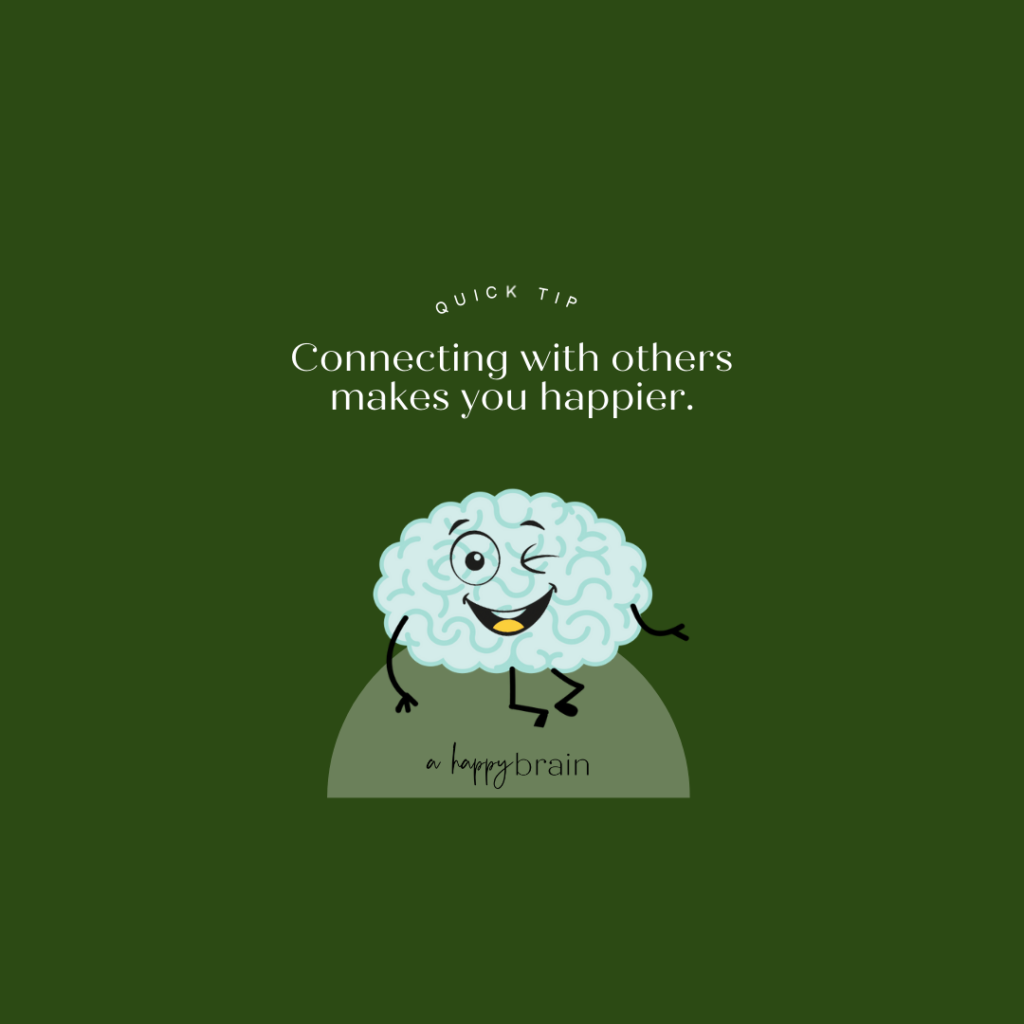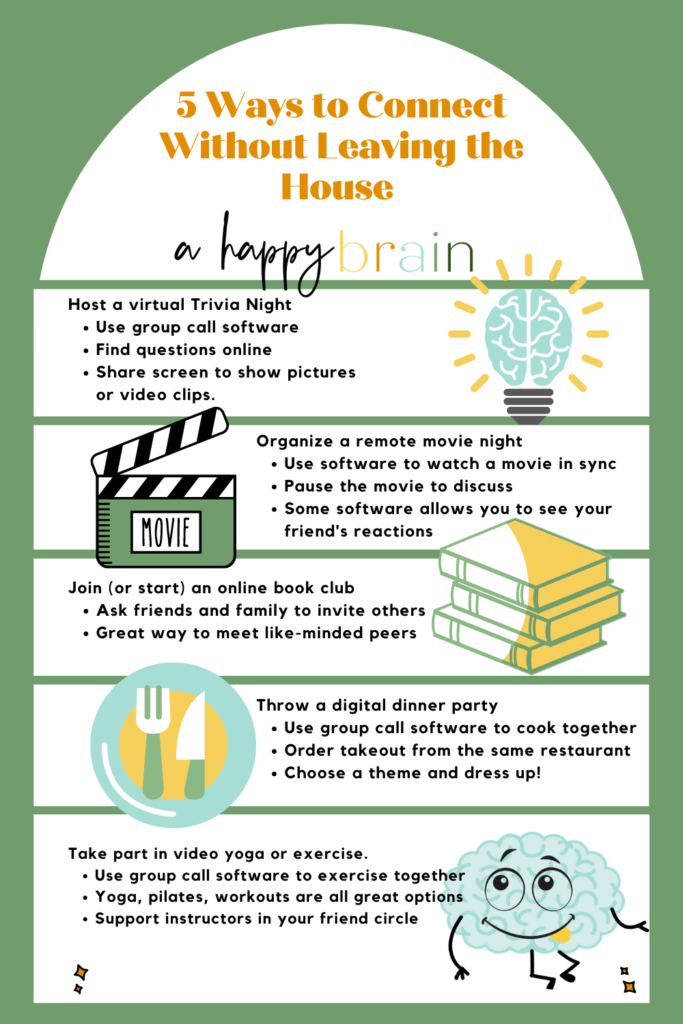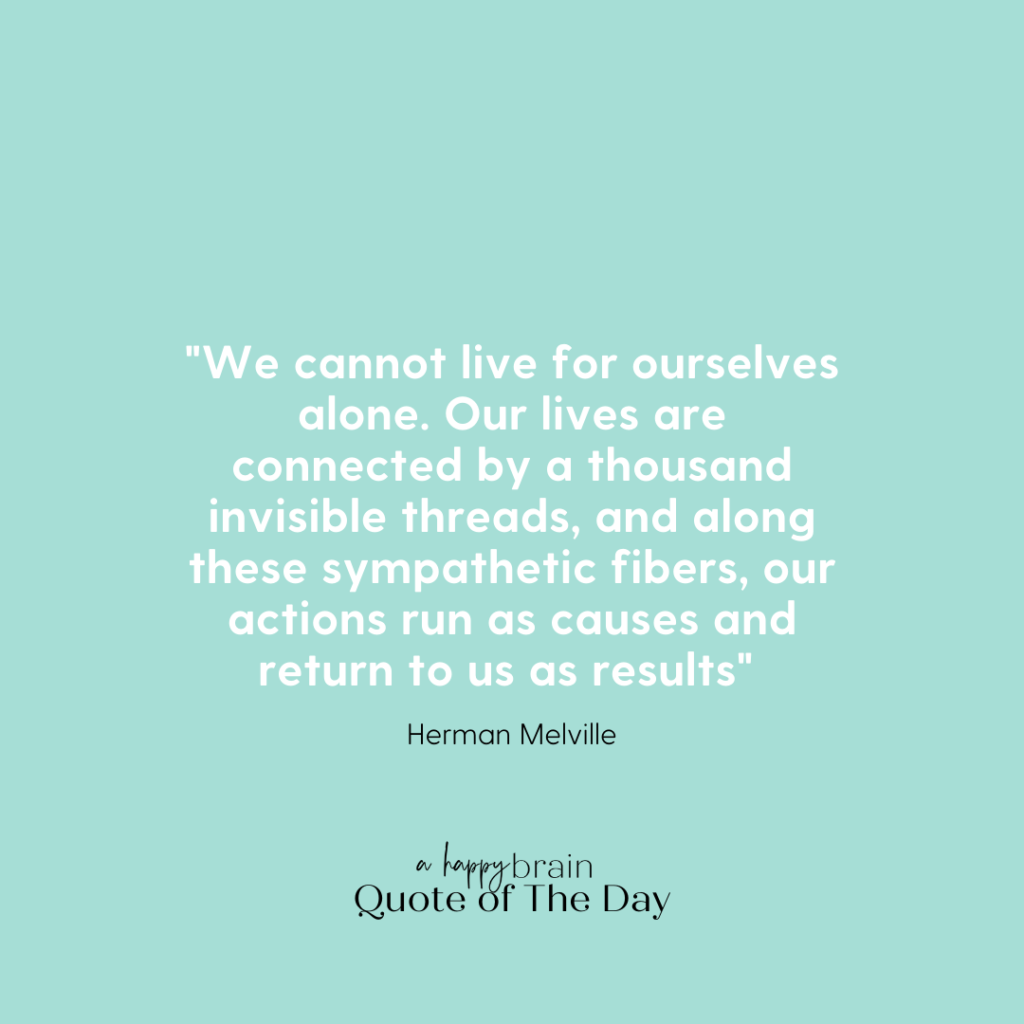Have you ever wondered about the importance of connection and what it does for the mind? Have you found it difficult to maintain these connections in the current environment? If so, then today’s post is for you! This article will provide some answers to these questions about the importance of connection and offer 5 ways to stay connected without leaving the house.
We humans are social animals. We join clubs, hang out together in bars, chat at the supermarket and play sports together. Even logging on to social media is part of the way we satisfy our innate need for connection with others.
We have a basic, instinctive need for communication and connection with other humans. We want to belong to a tribe and form relationships with others. This sociability is hard-wired into our brains. In fact, this connection has helped us evolve into the extraordinarily advanced animals that we are today.
Species with bigger brains have more powerful social contact and larger social groups1. Human brains are huge, especially our cerebral cortex, which makes up about 80% of our brain mass. The cerebral cortex2 is the outer layer of the brain. This area controls the ‘higher cognition functions’ like speech, thinking, memory and you guessed it, social behavior.
Therefore, it follows that human connection is essential to the health and development of our brains. Some scientists even say that a social life is as necessary to our wellbeing as food, water and shelter3.

Importance of Connection–Our Greatest Source of Joy
Connecting with others makes you happier. Having good relationships with people is indisputably beneficial to your mental (and also physical) wellbeing. These healthy relationships can even make you live longer4. A good social life has been proven to lower the incidence of depression. In fact, a team of researchers published a study in 2020 that named social connection as the strongest protective factor for depression in adults5.
We all know this to be true from experience. What makes us most joyous and keeps us in good spirits is sharing moments with family and friends. Unwanted isolation tends to lead to negativity and despondency.
Importance of Connection–The Modern Conundrum
Human beings are great at cooperation6. Our ability to effectively communicate and cooperate is what got us to where we are today, so connecting with other humans has always been an integral part of our lives. Up until not so long ago, we humans lived in much more close-knit communities, where face-to-face connections were a constant. In the modern world, however, this personal contact is becoming less and less common, especially in highly ‘developed’ nations like our own. But humans still have an in-built yearning to connect with each other, even though it may be a little more challenging these days.
Here at AHappyBrain, we’ve examined many of the physical changes we can make in our lifestyles to keep our brains functioning at their best. What we eat and drink, how much exercise we get, and even the health of our gut bacteria all have a direct effect on the performance of our gray matter.
In this article however, I’d like to focus on the importance of connection, human relationships, and how we can maintain them in the modern world, even when we can’t see each other in person. Technology has made such huge advancements recently, and there are now so many fun and stimulating ways to keep in contact with your friends and family, and even make new connections, all of which helps to keep that cerebral cortex firing and those neurons active.
So, without further ado, here are our top five ways to maintain a great social life without ever leaving your house.

Our Top 5 Ways to Maintain an Active Social Life Remotely
1. Host a Virtual “Pub Quiz” Trivia Night
Ever feel like you could be the next Alex Trebek? Well now you can! Using Zoom, Skype or any of the other group-call software, try hosting a ‘virtual trivia night’. There are thousands of online resources to help you come up with questions and fun rounds like ‘spot the difference’, ‘dingbats’, and ‘name the song intro’. By sharing your screen with the contestants, you can show them movie clips, pictures and music, all while you watch their concentrated little faces struggle with your masterfully devious questions! Let the winner choose the host for the following week, and you’ll have a thoroughly sociable event, topped off with a glass or two of your favourite tipple*.
A favorite of ours is the “find these items in your house” round where you give the contestants a list of ten items and challenge them to collect each one in an allotted time. The more obscure and creative the object, the more fun to be had, so try challenging them to “find something beginning with the letter Q” or “the oldest item in your house” (bonus point for the oldest) etc.
Before we move on, here are a few more tips for your trivia night:
- Plan these events in advance and send friendly reminders, as people can easily forget, or end up getting engrossed in a TV show and bail at the last minute.
- To keep it fun and light, ask questions that you know your friends will have a chance at answering—it’s no fun if everyone ends up feeling stupid!
- Leave plenty of time between rounds and questions for chat and banter—it’s all about having fun and socialising!
2. Organize a Remote Movie Night
We recently learned about this concept, and absolutely love it! There are various types of software that can facilitate this idea, the most prominent of which is “NetflixParty”. You and a friend, or a whole group of friends all over the globe, can choose a movie and watch it exactly in-sync on your individual TVs or devices. While you watch you can mute the audio to have a chat, pause the show for a half-time intermission (to fix some fresh cocktails* and popcorn), or have a live text conversation alongside the screen to share your theories on whodunnit! The software also allows you to use your webcams to see each other’s reactions as you watch together, which adds to the social dynamic.
Using this system, you can share your favourite series, documentaries and movies with your friend circle, no matter their location. You can set a time each week and take turns suggesting a movie to watch, or do a “comedy season”, or “horror season” (nothing too scary—remember your friends will be able to see you cowering behind the sofa!). If you’re a real cinephile you can even prepare a short talk to introduce the film and explain why you picked it!
3. Join (or Start) an Online Book Club
Much like the remote movie night we described above, online book clubs are an excellent way to use video-calling technology. These clubs help us keep in contact with a circle of like-minded peers. We’ve also found that this is a particularly effective medium for striking up new friendships as you’ll encounter others with similar interests to your own. You can ask your friends and family to invite members of their social circles until you have the perfect group size.
The variations on this theme are only limited by your creativity. However, here are some of our favorite ideas to make sure it’s fun and engaging for all:
- Include themed food and drinks to match the book of the month. For example suggest martinis* if you’re discussing a James Bond novel, or an Irish stew if you’ve chosen Angela’s Ashes!
- Agree on a format for discussion. It can be challenging on a group call to avoid talking over each other. Choose a moderator and set up a system, i.e. raising one’s hand to speak, or have allotted time slots to share your thoughts on that month’s book.
- Choose the right book! Pick something that’s accessible to your peers, and something which is easy to talk about and analyse. You may feel that Joyce’s Ulysses is a masterpiece of modernist literature (and we’d thoroughly agree). However, it may not be much fun for your reading companions, and may draw little discussion from the group, bar confused grimaces and utterances of bewilderment!
- Encourage free discussion! If the chat moves away from the actual text, then great! Don’t be fixed on only discussing the book, allow plenty of space for general conversation. The point of the exercise is to make genuine human connections, not perform an analytical literary investigation. Cocktails, as mentioned above, always help to lubricate the conversation*.
4. Throw a Digital Dinner Party
As dedicated foodies here at AHappyBrain, this is a real favorite of ours. The idea is simple, but it has unlimited possibilities. As it’s slightly more challenging to meet for real dinner parties these days, a digital dinner party is the next best thing. We know it may sound awkward or unnatural, but trust me, these can really work. Also, remember that you’ll be able to avoid that one friend’s awful cooking. Another benefit is that the clean up afterwards will be a fraction of the usual!
You can make this as complicated or as simple as you like. Ideas range from several gourmet courses to ordering in pizzas. We’ve even heard of friends ordering food from the same restaurant, or restaurant chain, to enjoy in their respective homes as they chat over a video call. Alternatively, you can include a “cook-along”. With this option, you send out an ingredient list in advance and prepare the meal together before eating.
- Sending invites with an explanation of how the evening will proceed is a fun way of reminding people to attend. It also clarifies the more technical details like ingredients lists and recipes.
- Choosing a theme is a great way to bring some more fun to the evening. Think taco night with Mexican outfits (optional) and margarita appetizers, or a Parisian culinary experience with escargots and fine wines.
- Combine your dinner party with one of the other ideas above. Dinner and a film, or dinner followed by a quiz can be a nice way to extend an evening of remote bonhomie.
5. Take Part in a Video Yoga or Exercise Session
This activity is doubly good for the health of your brain as it combines exercise with social communication. Scientific literature is building to support yoga’s great benefits to our brains7. In addition, physical exercise is well known to be a vital part of maintaining a healthy brain as we age. We will explore this more in another article.
“Video yoga” is a booming new industry, but there’s no need to break the bank. Many instructors offer their classes on a donation basis, where you choose how much you’d like to chip in. If you’re lucky enough to have a yoga instructor in your friend circle, consider supporting them and boosting your social life by suggesting weekly sessions .
This social exercise doesn’t have to be limited to yoga. Spinning classes, pilates, or even gym workouts can also be shared using video calling technology. Additionally, having someone along with you for your workout can be a great motivator.
Be Creative, and Prioritise your Relationships
As we’ve seen, despite the disruptive times we’re living through, there are plenty of possibilities for an active and healthy social life. All it takes is a little organization and some minimal technical know-how. The importance of connection makes it all worthwhile!
Don’t be put off by the technology, which we know can be a little daunting to begin with. Services like Skype, Zoom and Houseparty are very user-friendly. Once you’ve gotten over the initial teething problems, it will soon come naturally. Remember, too, that learning a new skill is excellent for the health of your brain. Be patient and power through, it will certainly be worth it!
Dr. Annissa Slusher
*Remember to limit alcohol consumption for long term brain health.

References:
- https://royalsocietypublishing.org/doi/10.1098/rspb.2013.1151
- https://www.karger.com/Article/Fulltext/489943
- https://newsroom.ucla.edu/releases/we-are-hard-wired-to-be-social-248746
- https://journals.plos.org/plosmedicine/article?id=10.1371/journal.pmed.1000316
- https://www.sciencedaily.com/releases/2020/08/200814131007.htm
- https://www.ncbi.nlm.nih.gov/pmc/articles/PMC2781880/
- https://www.ncbi.nlm.nih.gov/pmc/articles/PMC6971819/


This is such a helpful article! My friends & I have been trying to livin’ up our weekly zoom calls. This will help!
Thanks, Tiff! I hope it gave you some ideas to make those calls more fun!
-Dr. Slusher